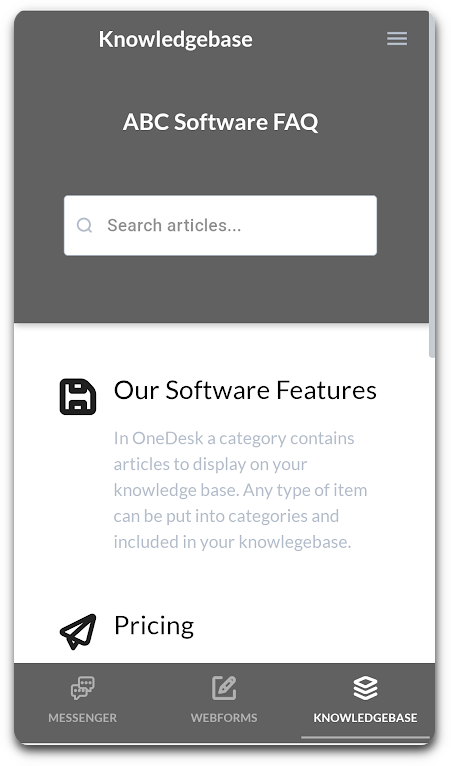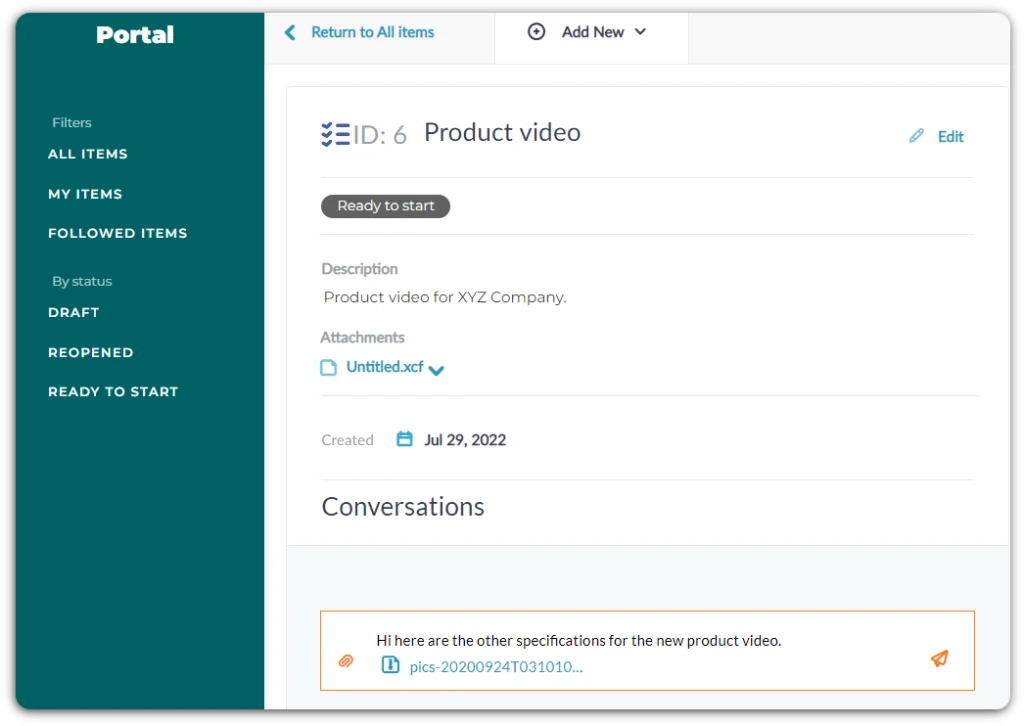With the advancement of technology and the increasing expectations of modern consumers, self-service options have emerged as a crucial component of effective customer support strategies. It has become important to encourage self-service for companies of any size or industry. Self-service refers to the customer support process that helps enable customers to get help on their own without contacting a support agent. It ecompasses a range of tools from knowledgebases to video guides and interactive tutorials. From a business perspective, self-service can reduce costs and increase efficiency. While for a customer, self-service empowers customers and offers convenience and reliability. However self-service does come with some stipulations and challenges in and of itself. In today’s blog I’d like to cover some aspects of implementing and maintaining self-service tools and the best practices of bringing self-service to your business.
Benefits of self-service
- Save time – Find yourself answering the same types of questions over and over again? This situation is the perfect case for implementing or improving your self service options. Self-service can reduce ticket volume and the amount of time spent answering common questions. Your support team can focus their time on solving more complex problems or providing personalized support.
- Save costs – By providing customers with self-service tools, you can ultimately reduce ticket volume. This means even small teams can support a large customer base. Rather than hiring more support agents, consider implementing self-service solutions to reduce the ticket load.
- Improve customer satisfaction – Many customers prefer finding answers on their own. With self-service tools you can empower your customers to do just that. Allowing a customer to find answers to their own questions is, in many cases, more convenient than emailing or waiting in queues. This point is perhaps the most important driver to customer satisfaction when it comes to self-services — the convenience. Self-service is available quickly and at any time of the day or night. Providing self-service options also displays a level of concern about customers, by providing them helpful information.
Challenges of self-service
- Findability and familiarity – One challenge is making self-service tools findable and easy to use. Some customers may be hesitant to try new tools. Ensure your resources are readily available and accessible to customers. Likewise, the answers should be easy to find. A customer who spends too much time looking for your self-service options will ultimately give up or just submit a ticket. Make your knowledgebase and other tools accessible from multiple locations. Consider introducing these tools during any onboarding processes. Lastly, be sure the resources are searchable and logically organized.
- Personalized support – There is a fine line between making live agents accessible while also encouraging the use of self-service. In the ideal situation a customer should follow guides or seek their own answers before submitting a ticket. At the same time you do not want to frustrate customers by making live agents near impossible to contact. This fact is especially true if you work in healthcare or another industry involving sensitive topics. Be sure to strike a balance between self-service and human and personalized support.
- Maintaining self-service tools – A comprehensive knowledgebase is a key tool for self-service. However, ensuring that the information is accurate and up-to-date requires ongoing effort. It can also be challenging to strike the right balance between providing enough information without overwhelming customers. Remember to conduct regular review of your self-learning tools. During the review consider relevance, level of detail accuracy, and any feedback you’ve received from customers.

Best practice: Options for enabling self-service
Identify common questions and issues
A crucial first step to implementing self-services is to define what to focus on. Go through and identify the questions you keep getting asked. These are the kinds of guides and videos you should focus on initially for your self service tools. There are a number of methods to identify these customer pain points.
Here are a few ideas:
- Talk to you support team – The support team interacts with customers daily! As such they will have a good idea of the kinds of questions customers are asking.
- Review your support interactions – Whether it is call logs, archived tickets, or old chats, go through your customer interaction systematically.
- Conduct customer surveys – As an ongoing improvement process, try asking your customers for their feedback. You might ask them at different times in your sales flow but a common time to get feedback is after the customer’s question or issue has been resolved. A survey should allow your customers to provide comments and a rating of the support they received.
- Use support software analytics – A customer support software like OneDesk typically includes a variety of built-in analytics. These analytics may include charts, graphs, or scheduled reports that export information about your tickets. You can make use of these analytics to when, where, and what tickets are coming in.
Use this information to develop comprehensive and relevant resources. You should frequently review and conduct these steps to continuously improve your self-service resources.
Create a self-service knowledgebase
As you’ve identified what common question you have. The next self-service best practice is to implement a knowledgebase. A knowledgebase is a hub of information for your customers. Most knowledgebases allow you to organize articles into categories and will provide a search option as well. Publish complete and informative articles and guides complete with images or videos. One of the best ways to implement a knowledgebase is using a knowledgebase software. The benefit of using software is that the rollout and management of your resources is more streamlined.
Use automated replies
Automated replies are responses that will be sent to the customer when a certain criteria is met. For example, if a customer logs a ticket with the phrase ‘how to reset my password?’ you might have an auto-reply that explains the reset password steps. In a help desk like OneDesk, you can set-up flexible workflow automations that perform actions on different conditions. Other popular automations include sending an automatic confirmation on ticket receival or closure, sending reminder messages, or predefined email templates. There are large variety of automations you can make use of in your support processes. In terms of self-service, automations can serve as a way of sending resources to customers or as a means of directing your customers to self-service tools.

Enable a self-service portal
A self-service portal sometimes referred to as a customer portal, allows customers to stay updated on their tickets. A portal can reduce the time your team takes on giving updates to customers. Instead, a customer can see changes being made on their ticket, the ticket status, and other ticket properties whenever they want, just by logging into the portal.
Make your tools easy to access
Your self-service tools are only beneficial if your customers use them! A best practice for self-service tools is to link them in multiple locations. As such, your customers can find the tool when they need them. The number one place you should have your self-service tools is your website. For example, link your knowledgebase or portal to the header or footer menus of your webpage. You might also link your tools to your email signature or other automated replies and emails. Another useful tool is a web widget. A web widget appears as a bubble icon on your webpage. When clicked, the icon expands to give your customers access to self-service apps like the knowledgebase or portal. In comparison to using just a link, the widget is always visible and easily accessible from anywhere on your webpage.
Summary: Best practices for self-service
- Build a comprehensive knowledge base.
- Keep resources up-to-date.
- Offer multiple resources in different formats.
- Make resources easy to find.
- Don’t forget the importance of live agents.
- Use automations.